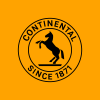FMP

Continental AG
CTTAF
PNK
Continental Aktiengesellschaft, a technology company, offers intelligent solutions for vehicles, machines, traffic, and transportation worldwide. It operates through four sectors: Automotive, Tires, ContiTech, and Contract Manufacturing. The company offers safety, brake, chassis, motion, and motion control systems; solutions for assisted and automated driving; and audio and camera solutions for the vehicle interior, as well as intelligent information and communication technology solutions. It also provides tires for cars, trucks, buses, two-wheel and specialist vehicles, bicycles, and motor vehicles, as well as digital tire monitoring and management systems. In addition, the company develops and manufactures cross-material, environmentally friendly, and intelligent products and systems for automotive, railway engineering, mining, agriculture, and other industries, as well as provides contract manufacturing services. It sells its products through 944 company owned tire outlets and approximately 5,200 franchise locations The company was formerly known as Continental-Caoutchouc- und Gutta-Percha Compagnie. Continental Aktiengesellschaft was founded in 1871 and is headquartered in Hanover, Germany.
80.72 USD
0 (0%)

EBIT (Operating profit)(Operating income)(Operating earning) = GROSS MARGIN (REVENUE - COGS) - OPERATING EXPENSES (R&D, RENT) EBIT = (1*) (2*) -> operating process (leverage -> interest -> EBT -> tax -> net Income) EBITDA = GROSS MARGIN (REVENUE - COGS) - OPERATING EXPENSES (R&D, RENT) + Depreciation + amortization EBITA = (1*) (2*) (3*) (4*) company's CURRENT operating profitability (i.e., how much profit it makes with its present assets and its operations on the products it produces and sells, as well as providing a proxy for cash flow) -> performance of a company (1*) discounting the effects of interest payments from different forms of financing (by ignoring interest payments), (2*) political jurisdictions (by ignoring tax), collections of assets (by ignoring depreciation of assets), and different takeover histories (by ignoring amortization often stemming from goodwill) (3*) collections of assets (by ignoring depreciation of assets) (4*) different takeover histories (by ignoring amortization often stemming from goodwill)